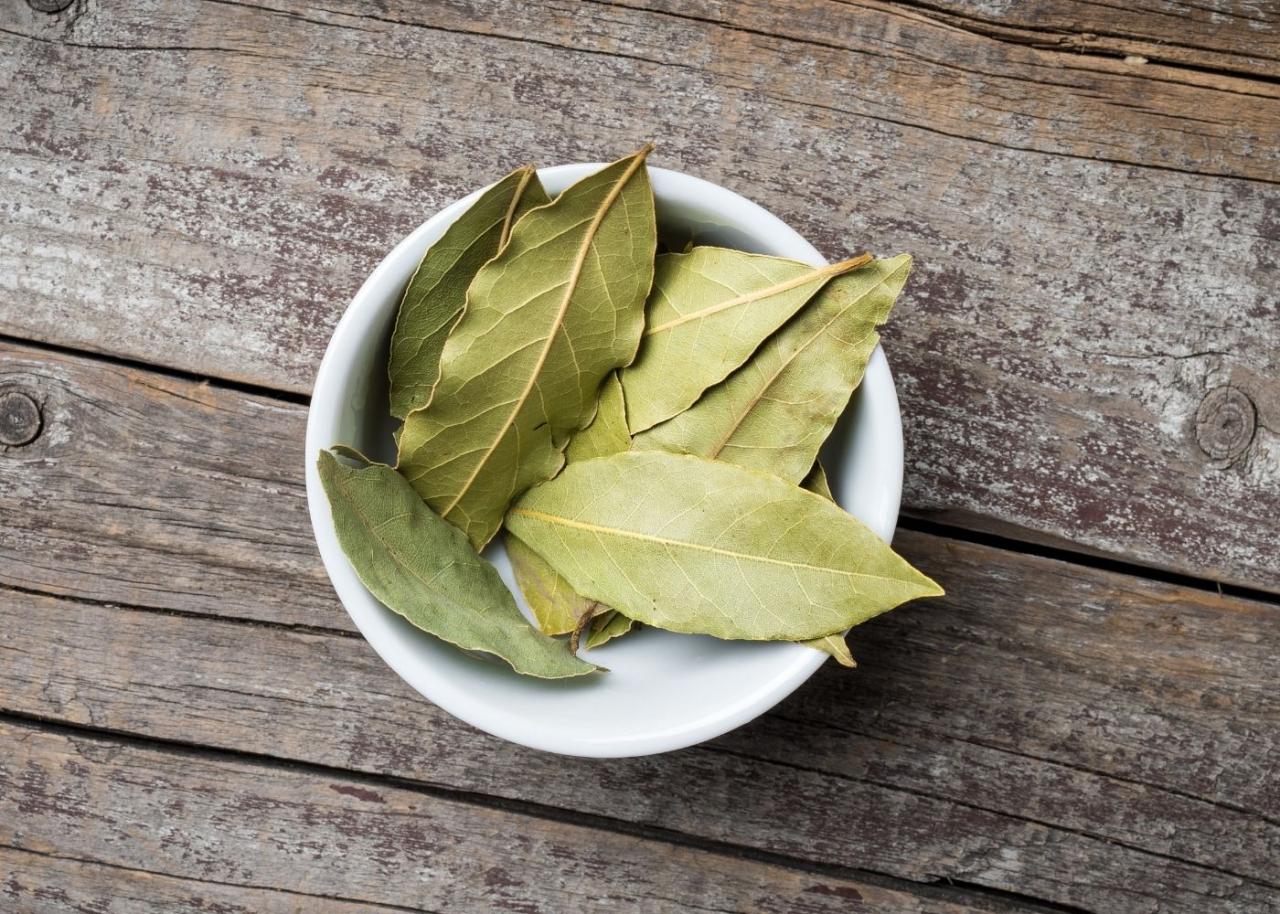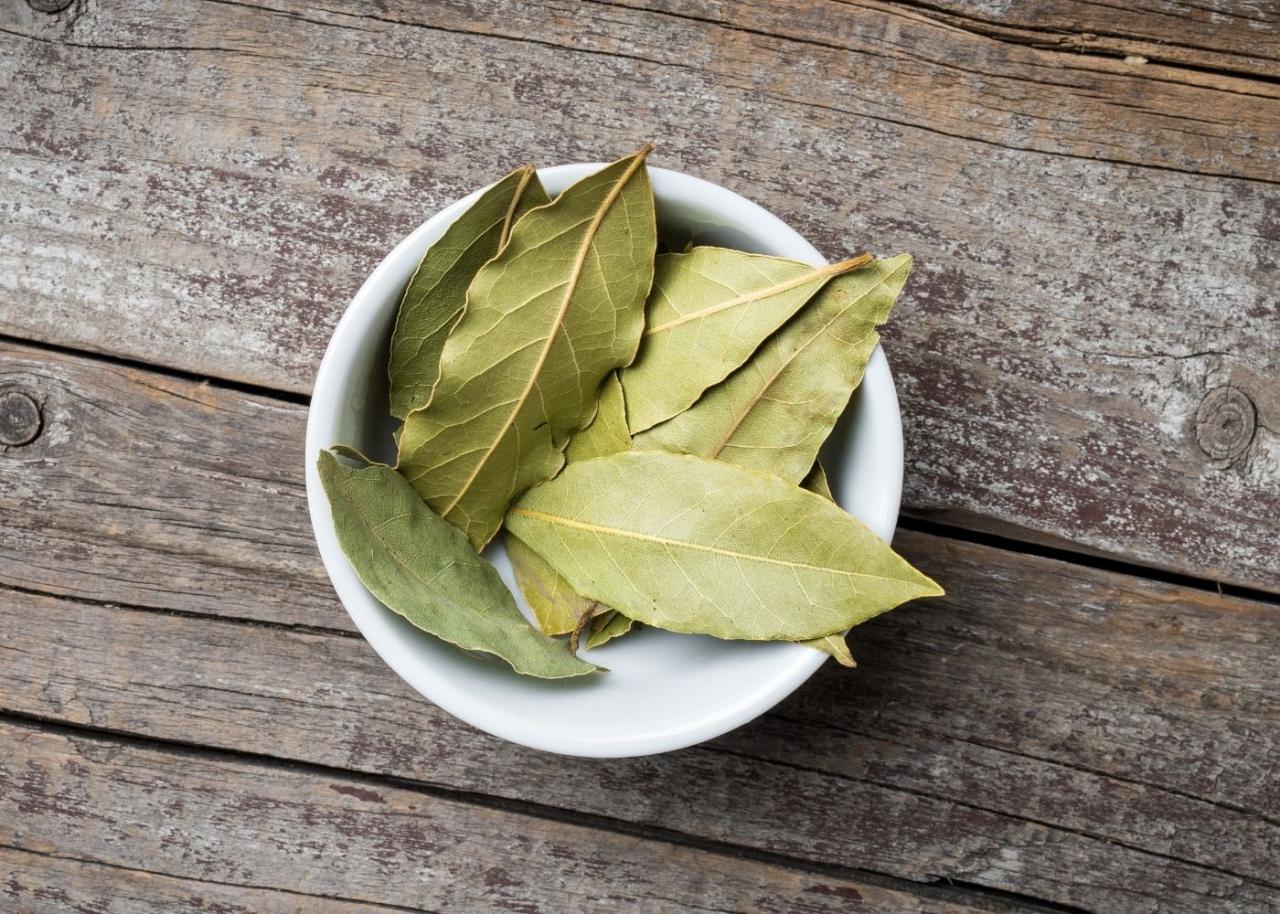The Best Substitutes for Bay Leaves That Will Elevate Your Dish sets the stage for this enthralling narrative, offering readers a glimpse into a story that is rich in detail and brimming with originality from the outset. Bay leaves, with their earthy, slightly bitter aroma, have long been a staple in kitchens worldwide, adding depth and complexity to countless dishes.
But what happens when you find yourself without this essential ingredient? Fear not, culinary adventurers! There’s a world of flavorful substitutes waiting to be discovered, each with its own unique character and potential to elevate your culinary creations.
This guide will explore the top substitutes for bay leaves, delving into their flavor profiles, best uses, and considerations. From the citrusy zest of lemon verbena to the warm, woodsy notes of rosemary, we’ll uncover a treasure trove of alternatives that can transform your cooking and inspire new culinary adventures.
The Best Substitutes for Bay Leaves That Will Elevate Your Dish
Bay leaves, with their distinctive aroma and flavor, are a staple in many cuisines worldwide. From hearty stews and soups to rich sauces and marinades, they add a subtle depth and complexity that elevates dishes to new heights. However, there are times when you might find yourself without bay leaves or simply want to explore alternative flavors.
Luckily, there are several excellent substitutes that can bring similar qualities to your cooking.
Why Substitute Bay Leaves?, The Best Substitutes for Bay Leaves That Will Elevate Your Dish
There are a few reasons why you might need to substitute bay leaves. Perhaps you’re out of them, or you’re trying to avoid them due to allergies or sensitivities. Additionally, some people simply prefer the flavor profiles of other herbs and spices.
Whatever your reason, having a few go-to substitutes in your culinary arsenal is always a good idea.
Best Bay Leaf Substitutes: The Best Substitutes For Bay Leaves That Will Elevate Your Dish
Bay leaves, with their earthy, slightly bitter aroma, add depth and complexity to countless dishes. However, if you find yourself without this culinary staple, don’t fret! Several excellent substitutes can achieve a similar effect, bringing their own unique flavor profiles to the table.
Bay Leaf Substitutes
While bay leaves are often considered irreplaceable, several substitutes can mimic their flavor and enhance your dishes. These substitutes, ranging from herbs to spices, offer a diverse range of taste profiles, allowing you to experiment and find the perfect match for your culinary creations.
Substitute |
Flavor Profile |
Best Uses |
Considerations |
|---|---|---|---|
Thyme |
Earthy, slightly peppery, with a hint of lemon |
Stews, soups, roasts, sauces |
Use a smaller quantity than bay leaves, as thyme has a stronger flavor |
Rosemary |
Woody, slightly piney, with a hint of camphor |
Roasted vegetables, lamb dishes, marinades |
Use sparingly, as rosemary can overpower other flavors |
Oregano |
Earthy, slightly bitter, with a hint of citrus |
Tomato-based sauces, pizzas, Italian dishes |
Use a slightly larger quantity than bay leaves, as oregano has a milder flavor |
Marjoram |
Sweet, slightly minty, with a hint of lemon |
Chicken dishes, salads, egg dishes |
Use a smaller quantity than bay leaves, as marjoram has a more delicate flavor |
Sage |
Savory, slightly bitter, with a hint of camphor |
Stuffings, poultry, pasta dishes |
Use sparingly, as sage can overpower other flavors |
Thyme
Thyme, a member of the mint family, boasts a robust flavor profile with earthy notes and a subtle hint of lemon. Its versatility shines in stews, soups, roasts, and sauces, adding a complex depth to these dishes.
Rosemary
Rosemary, a woody herb with a distinctive piney aroma, lends a robust and slightly camphoraceous flavor to culinary creations. Its versatility extends to roasted vegetables, lamb dishes, and marinades, where it imparts a rich and earthy depth.
Oregano
Oregano, a staple in Mediterranean cuisine, possesses a distinct earthy flavor with a hint of citrus. Its versatility shines in tomato-based sauces, pizzas, and Italian dishes, adding a characteristic aroma and complexity.
While bay leaves are a staple in many kitchens, there are times when you might find yourself without them. Luckily, there are several substitutes that can add depth and complexity to your dishes. If you’re looking for a unique flavor profile, consider incorporating fresh herbs like rosemary or thyme.
For a more subtle touch, try using dried herbs like oregano or marjoram. But for a touch of luck in your garden, explore the world of four-leaf clovers with our guide on How to Unlock the Benefits of a Four Leaf Clover in Your Garden.
Once you’ve returned to the kitchen, remember that even without bay leaves, you can still create delicious and aromatic dishes with a little creativity and the right substitutes.
Marjoram
Marjoram, a member of the mint family, offers a sweet and slightly minty flavor with a subtle hint of lemon. Its versatility shines in chicken dishes, salads, and egg dishes, adding a delicate and aromatic touch.
Sage
Sage, a member of the mint family, boasts a savory and slightly bitter flavor with a hint of camphor. Its versatility shines in stuffings, poultry, and pasta dishes, adding a complex depth to these culinary creations.
Flavor Considerations

While bay leaves offer a distinct earthy, slightly bitter, and camphoraceous flavor, their substitutes provide unique nuances that can enhance or alter the overall taste profile of your dishes. Understanding these flavor variations and their impact on different culinary creations is crucial for choosing the right substitute and achieving the desired taste.
Flavor Profiles of Bay Leaf Substitutes
The following substitutes offer distinct flavor profiles that can significantly influence the taste of your dishes:
- Thyme:Thyme provides a more herbaceous, slightly peppery, and slightly lemony flavor compared to the earthy and camphoraceous taste of bay leaves. It’s a good substitute for dishes with a Mediterranean or French influence, as it complements the flavors of tomatoes, garlic, and onions.
- Rosemary:Rosemary offers a strong, pungent, and slightly bitter flavor with hints of pine and camphor. It’s an excellent substitute for dishes that require a robust, earthy flavor, such as stews, roasts, and sauces. However, its strong flavor requires careful use to avoid overpowering other ingredients.
- Oregano:Oregano delivers a warm, slightly bitter, and earthy flavor with hints of citrus and pepper. It’s an excellent substitute for dishes with Italian or Mediterranean flavors, particularly those featuring tomatoes, garlic, and olive oil. Its versatility makes it suitable for both savory and sweet dishes.
- Marjoram:Marjoram offers a milder, sweeter, and more floral flavor compared to bay leaves. It’s a good substitute for dishes with delicate flavors, such as soups, sauces, and vegetables. Its mild flavor makes it a good choice for dishes where a strong, assertive flavor is not desired.
- Sage:Sage provides a strong, earthy, and slightly bitter flavor with hints of pine and camphor. It’s an excellent substitute for dishes that require a robust, earthy flavor, such as stuffing, poultry, and pork. However, its strong flavor requires careful use to avoid overpowering other ingredients.
Impact on Flavor Profiles
The choice of substitute can significantly impact the overall flavor profile of a dish. For instance, using thyme in a tomato-based sauce will enhance its herbaceous and slightly lemony notes, while rosemary in a roast will impart a robust, earthy, and slightly bitter flavor.
Adjusting Cooking Times and Quantities
To achieve the desired flavor, adjusting the cooking time and quantity of the substitute is crucial. For example, using a stronger substitute like rosemary requires a shorter cooking time to avoid overpowering the other flavors. Conversely, a milder substitute like marjoram may require a longer cooking time to infuse its flavor fully.
Availability and Accessibility
Finding suitable substitutes for bay leaves can be easy or challenging, depending on your location and access to various markets. The availability and accessibility of different substitutes vary greatly, so it’s essential to understand where to find them.
Local Markets and Online Retailers
The availability of substitutes depends on the region and local markets. Some substitutes, like thyme and rosemary, are commonly found in most grocery stores. Others, like dried lemon peel or orange peel, may be more difficult to locate.
When seeking substitutes for bay leaves, consider the desired flavor profile. For a more subtle earthiness, try thyme or rosemary. If you prefer a stronger, more pungent flavor, oregano or marjoram could be a better choice. And if you’re looking for a visually appealing addition to your dish, consider incorporating the vibrant blooms of columbine, as discussed in this helpful guide on how to achieve beautiful columbine plants with minimal effort.
Regardless of your preference, a well-chosen substitute can enhance your culinary creations and elevate the overall taste experience.
- Local Markets:Check local grocery stores, farmers markets, and ethnic markets for a wider variety of substitutes. These locations often carry a more diverse selection of herbs and spices.
- Online Retailers:Online retailers like Amazon, specialty spice shops, and online grocery stores offer a wider range of substitutes, including less common options. These platforms provide access to a wider selection of herbs and spices, even if they are not readily available in your local area.
Conclusion
Finding the right bay leaf substitute can significantly impact the flavor profile of your dish. While bay leaves are widely available, exploring alternatives can add depth and complexity to your culinary creations.
Choosing the Best Substitute
When selecting a bay leaf substitute, consider the specific flavor you want to achieve. The substitutes listed in this article provide a range of flavor profiles, from earthy and herbaceous to citrusy and floral. Experiment with different options to discover your favorites.
Conclusion
As you embark on your culinary journey, remember that the world of bay leaf substitutes is vast and full of exciting possibilities. Don’t be afraid to experiment, embrace the unexpected, and discover your own favorite alternatives. With a little creativity and a willingness to explore, you can unlock a world of flavor and elevate your dishes to new heights.
Questions Often Asked
What is the best substitute for bay leaves in a tomato sauce?
For tomato sauce, rosemary is a great substitute for bay leaves, adding a warm, woodsy depth that complements the acidity of the tomatoes.
Can I use dried bay leaves instead of fresh?
Yes, you can use dried bay leaves, but keep in mind that they are more concentrated in flavor. Use about 1/3 the amount of dried bay leaves compared to fresh.
Are there any substitutes for bay leaves that are vegetarian?
All the substitutes discussed in this article are vegetarian, as they are derived from plants.
